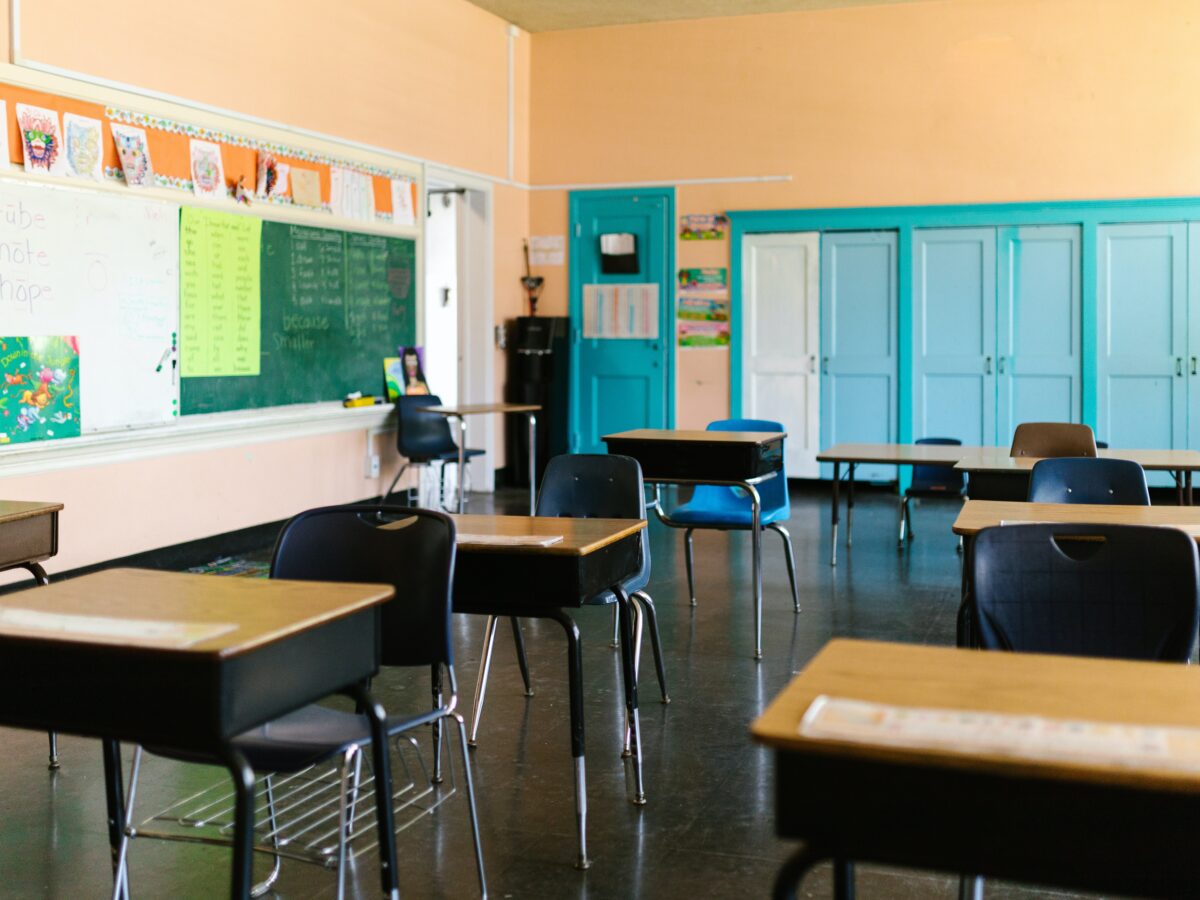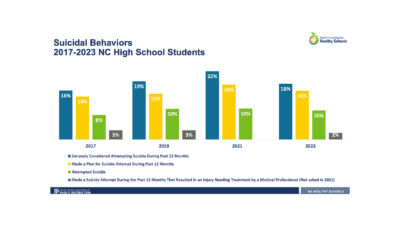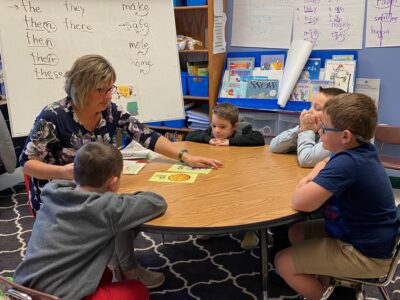
|
|
This article discusses mental health. If you or someone you know needs help, reach out to the National Suicide and Crisis Lifeline by calling 988.
North Carolina high school students presented drafted legislation to the State Board of Education last Thursday that they believe will help address mental health and substance abuse issues facing their peers.
The students, part of the 2024 State Superintendent’s Student Advisory Council, proposed implementing statewide Naloxone training and doses in all North Carolina public schools. Naloxone, according to the Centers for Disease Control and Prevention (CDC), is “a life-saving medication that can reverse an overdose from opioids — including heroin, fentanyl, and prescription opioid medications — when given in time.”
The student team also proposed having school wellness teams to proactively intervene and to provide free training on suicide prevention and mental health.
“Today we would like to address a critical issue affecting many students across North Carolina: mental health and substance abuse,” said council member Sarah Beitar, a student at Triton High School in Erwin. “We all know that this crisis is continuing to worsen and cannot continue being ignored. Addressing mental health and substance abuse in our schools requires a multifaceted approach, including better training, effective policies, and necessary resources.”
According to the Department of Public Instruction’s (DPI) 2023 NC Youth Risk Behavior Survey, North Carolina students are reporting fewer mental health challenges and suicidal behaviors than when they peaked during the height of the Covid-19 pandemic.
High school students who reported seriously considering suicide in the past year dropped from 22% in 2021 to 18% in 2023, according to survey results. The percentage of high school students who reported feeling sad or hopeless dropped to 39% in 2023 after reaching 43% in 2021.
The survey results show no significant change in prescription painkiller drug use or bullying, but showed a decline in the use of vape products, marijuana, and alcohol.
Despite trends moving in the right direction, members of the student advisory council said schools and students still need more support. Members also highlighted that these issues can impact any student.
“Despite my excelling academically and being deeply involved in extracurricular activities, I’ve personally faced mental health challenges throughout my academic career,” said Michael Raye, a student at Innovation Early College High School in Greenville. “I mention this to highlight the misconception that mental health issues only affect those who are struggling academically, or engage in risky behaviors. It is crucial that we address these challenges openly and work together to find meaningful solutions.”
In the United States, a large contributor to poor mental health in teens is substance abuse, the group said. According to the National Center for Drug Abuse, 2.08 million 12- to 17-year-olds nationwide reported using drugs in the last month — more than 8% of teens.
The use of drugs can interfere with short-term memory and learning, the group said, and also puts youth at a higher risk for mental health issues.
Here is a look at what the students proposed to address mental health and substance abuse challenges:
- Creating early intervention/wellness teams at North Carolina schools. These team should provide training to staff members to look for warning signs of substance abuse and know the protocols for intervention.
- Providing Narcan/Naloxone in all schools. The group is advocating for two doses for all public schools in North Carolina, to be replaced as used.
- Training on how to use Naloxone. Specifically, the group advocated for Naloxone training for a minimum of two administrators per public school, including charters.
- Suicide prevention training for school administrators with the Suicide Prevention Resource Center.
“We can create a supportive environment for all students,” Beitar said. “We urge you to support these initiatives and work together to foster healthier, more resilient students.”

Following the council’s presentation, state Superintendent Catherine Truitt asked the nine student presenters if they knew someone who had overdosed from their school. Three of them raised their hands.
Board Chair Eric Davis said the Board should consider the group’s recommendations when considering its upcoming legislative agenda.
“This is just one of many mental health issues that our students are facing,” Davis said. “And our state has not stepped up sufficiently to meet those needs.”
In addition to providing resources to address substance abuse, Davis said the Board would also like the state to address long-standing issues, like a shortage of nurses, counselors, social workers, and psychologists in schools.
“You deserve for our state to help you, because you’re our future,” Davis told the students.
You can read the student advisory council’s full presentation here.
Here is a look at the members of the council, with the members who presented to the Board last week in bold.

School-Based Mental Health Policy
The Board also discussed updates to its School-Based Mental Health Policy, which was adopted in November 2020.
Per state law, the policy required K-12 school units to adopt and implement a school-based mental health plan — including a mental health training program and a suicide risk referral protocol.
In 2021, a new state law required public schools to also provide students in grades 6-12 with information and resources on child abuse and neglect, including sexual abuse.
In a press release, DPI linked gains in mental health reflected in the 2023 NC Youth Risk Behavior Survey with students becoming more physically active.
The Board’s school mental health policy was updated to reflect that data.
The draft updated policy adds the following items to a section which says public schools “are strongly encouraged to include the following core/universal strategies in their plans, in addition to other strategies:”
- In the interest of improving student mental health, PSUs shall provide physical activity to students in grades K-12. Schools are expected to provide students in grades K-8 with the opportunity to participate in physical activity during the school day for 30 minutes daily.
- In the interest of improving student mental health, PSUs shall provide physical activity to students in grades K-12. Beginning with the 2025- 2026 school year, schools are expected to provide students in grades 9-12 with the opportunity to participate in physical activity during the school day for 60 minutes weekly.
The updated policy would also require schools to include the following to its reports to DPI, in addition to content of the school-based mental health plan and prior school year compliance:
- Quantitative instances of student contacts for referrals, interventions, and services provided by specialized instructional support personnel, related to mental health and overall student wellness, as reported in the NC Student Information System.
- Numbers/vacancies of school counselors, nurses, social workers, psychologists, clinicians, etc. related to mental health and overall student wellness, as reported in the NC Student Information System.
Here’s a look at the draft updated policy, set to be voted on at the Board’s September meeting.
Identifying multilingual learners
In North Carolina, all students complete a home language survey when first entering a North Carolina school.
If indicated based on the survey, students are also screened for English language services
Once a student is identified as an “English learner,” according to federal law, students must be tested annually in four domains: speaking, reading, listening, and writing. (In North Carolina, these students are called “multilingual learners,” in order to highlight assets instead of deficits.)
Each state sets exit criteria needed for students to demonstrate English language proficiency.
Last Wednesday, the Board began the process of working to update that criteria.
According to a presentation from DPI, educators have said that sometimes students who “demonstrate language proficiency and readiness to exit the program are unable to meet the exit criteria on the language proficiency assessment.”
“Using measures in addition to the English language proficiency assessments may provide more comprehensive information to determine whether a student should exit English learner status,” the presentation says.
The Offices of Academic Standards and Accountability and Testing are collaborating to review the current exit criteria and processes, DPI said. The goal is to present a recommendation for any changes to the Board in November 2024.
There are two English language proficiency tests: ACCESS for ELLS for students who participate in the general content standards, and WIDA Alternate ACCESS test for students who participate in the alternate content standards.
On Thursday, the Board did approve a recommendation to update the exit criteria for the Alternate ACCESS test. In 2020-21, the criteria was set as two years of achieving a P1 level, which is considered the first level of English proficiency, of three levels.
“Recently, the (U.S. Department of Education’s) Office of English Language Acquisition noted it is not allowable to hold students to a two-year exit criteria,” DPI’s presentation says. “When a student meets the exit criteria, they exit English learner status and follow established monitoring protocols.”
The Board voted to amend the policy to state that “a student who meets a level of P1 exits English learner status.”
You can view DPI’s presentation here, and the draft policy here.
The Board also approved seven North Carolina schools to participate in the United States’ sample for Program for International Student Assessment (PISA).
According to the Board’s agenda: “PISA measures 15-year-olds’ ability to use their reading, mathematics, and science knowledge and skills to meet real-life challenges. The assessment administration is scheduled for spring 2025.”
A notice to Weldon City School Board
The Board voted on Thursday to give the Weldon City School Board 60 days to resolve several issues before suspending the local board’s duties.
The Board’s primary concerns include continually low-performing academic status, frequent turnover and buyouts of superintendents, failure to retain quality administrative employees, and financial concerns. Additionally, the Board is concerned that the local board refused personnel recommendations made by Interim Superintendent Dr. Rodney Shotwell — appointed by the State Board of education on July 11 — without cause.
“Since Dr. Shotwell’s appointment as the State Board appointed Interim Superintendent, the Weldon City Board has continually failed to cooperate with him and has otherwise hindered the ability to improve student performance in the Weldon City Schools,” the Board’s notice says.
This is not the conduct of a board that understands the critical and pressing need to improve student performance or accepts responsibility by working with the State Board to remedy the failures that led to the dire situation that the Weldon City Schools are currently facing. It is the result of the Weldon City Board’s lack of cooperation and failure to accept responsibility for the situation in which it finds itself that leave the State Board no other option than to provide this Notice and move to the next statutory step of intervention.
The state Board’s notice includes 18 demands to be met by the Weldon City School Board, including general, academic, financial, and personnel expectations.
Per the notice, the Weldon City Board shall be given an opportunity to appear before the State Board of Education within 45 days of this notice to provide a response to these areas of concern in an attempt to reach an agreement.
You can read the full notice here.
The Board also approved a motion to withhold $13,510 per moth from the Weldon City Board’s Central Office Administration allotment, in order to fund the state Board’s appointment of Shotwell as interim superintendent. You can read that document here.
On Friday, the Weldon City School Board released a press release regarding the notices.
“The Weldon City Board of Education takes the information contained in those documents seriously and is carefully reviewing them with counsel. The board will not comment further on them at this time,” the press release says. “… The Weldon City Board of Education recognizes that there is work to be done, and is committed to working with its staff, families, community, and the State Board of Education and Department of Public Instruction to continue to improve education for students in the Weldon City Schools and to achieve its vision of serving as a model district for the state.”
You can read the full press release here.
NIL athletic policy discussion, updated salary schedules, and more
- Que Tucker, commissioner of the North Carolina High School Athletics Association (NCHSAA), gave the Board a presentation on NIL (name, image, and likeness) compensation for student athletes. The NCHSAA previously allowed NIL deals in high school, until the Board reversed that decision in June. On Thursday, Tucker told the Board the state needs a policy that offers students consistent and clear guidance, including financial education.
- The Board approved salary schedules for Fiscal Year 2024-25, along with a salary manual guide for the year. You can read more about teacher pay for the year here.
- The Board also approved a manual on school attendance and student accounting. Take a look here.
- DPI received approximately $5.7 million from the United States Department of Agricultures’s (USDA) Fresh Fruit and Vegetable Program, for the 2024-25 school year. Per federal law, schools with the highest percentage of economically distressed students should be given priority. On Thursday, the board approved funding for the 212 elementary schools who applied, with the allotment of $68.12 per pupil.
- Finally, the Board heard a presentation on standards and a rubric for defining micro-credentials in public schools — developed through the partnership of states led by DigiLearn. The Board is set to adopt the standards this fall.
The full Board meets next on Aug. 7 for a virtual, special-called meeting. The Board’s next regular meeting is Sept. 4-5.








